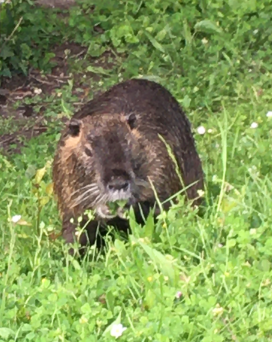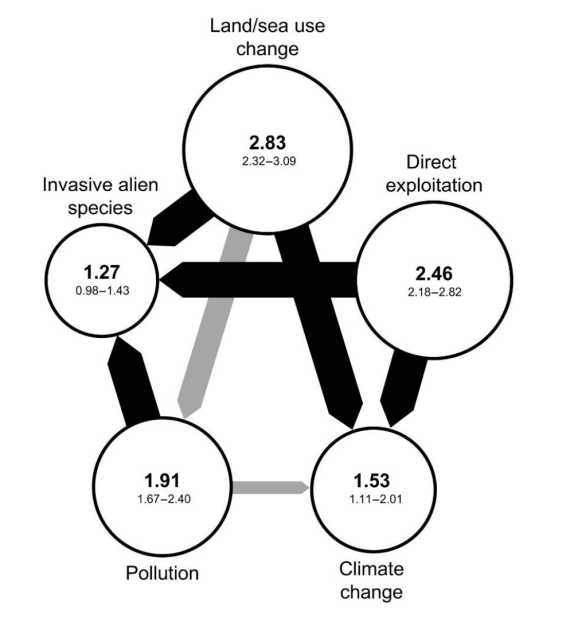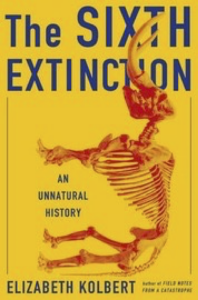Human activities and biodiversity loss
Humans tend to have an influence on biodiversity and it is rather a negative one, with many recent extinctions that can be directly attributed to humans. Let us explore the main drivers of human-induced biodiversity loss.
Land use change
Underground ecosystems are disrupted by farming practices and the spreading of urban areas.
Human-induced land degradation impairs soil permeability, decreases soil fertility and slows down the formation of new soil.
Direct exploitation
Overexploitation includes excessive hunting, fishing or harvesting of wild resources.
Human predation only comes second at a global scale but it is the main cause of biodiversity loss in marine ecosystems.
Pollution
Ecosystems my be disturbed by :
chemical or biological compounds released in the air, water or soil
light or noise generated by human activities
Climate change
Human activities have an impact on the climate of our planet.
Climate adaptation mechanisms include mutations and migrations.
Species that do not have the time to adapt are at risk of extinction.
Biological invasions
As humans travel around the globe, they transport other species.
Most of the times, alien species either fail to adapt to their new ecosystem of insert in it without harm.
Sometimes the newcomer eliminates indigenous species, be it by predation or competition for resources, triggering an imbalance in the ecosystem.
Example : Nutria, the beaver rat

Nutria are semiaquatic rodents originating from South America.
They have been imported on all the continents for their fur. After escaping from breeding farms, they landed into ecosystems in which their natural predators do not exist.
Nutria is considered an invasive species in may locations since their burrowing habits damage river banks and they transmit diseases to humans and animals.
There are several options for controlling the spread of invasive species, including capture or introduction of predators. For nutria, since its predators are puma and caiman, the second option is not an easy one!
Human activities and biological extinctions
All the human-induced strains on the environment explain why most currently endangered species are at risk because of human activities.

